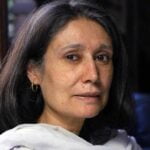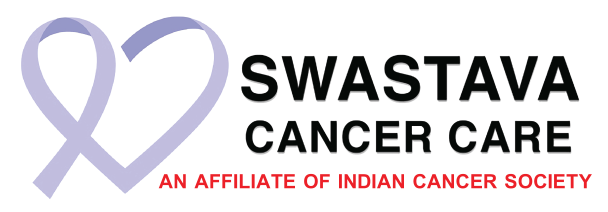I thank Swastava Cancer Care Society for inviting me to inaugurate their blog. Since October is breast cancer awareness month I have decided to share my thoughts on breast cancer in India.
Sarla was 32 years of age when she discovered a lump in her breast. It was painless so she ignored it at first but annoyingly it refused to go away. Finally, she decided to visit her gynaecologist who suggested a mammogram. The doctor at the diagnostic centre, given the density of her breast tissue, advised her to supplement the mammogram with an ultrasound as the area of her breast where the lump could be felt was obscured by whiteness on the film. A week later, she was in a clinic for a fine needle aspiration which it was hoped would establish her diagnosis. Was it a benign or malignant tumour? The results were in; she had breast cancer.
Sarla is one among an increasing number of women in India’s cities who will be told they have breast cancer. This is a worldwide trend, as in the last thirty years the number of breast cancer cases among women has doubled. While this is alarming, it is worth remembering that part of the reason for this increase is the fact that women, especially the urban and more affluent, are living longer while there is a growing awareness and access to medical facilities which is also responsible for higher detection rates today.
The worrying aspect for us is that despite the fact that globally more women than at any other time in history are being cured of breast cancer, for women in India this still remains a life threatening disease. This is not only because women in India tend to be diagnosed with breast cancer at more advanced stages than their counterparts in the West,but also because they are getting cancer at a much younger age when detecting and treating cancer is more challenging.
The screening tool that is considered the gold standard for early detection of breast cancer is the mammogram. While it works well for women over the age of 50 years, it works less well for those in their 40s and younger. This is why Sarla, for example, had to have an ultrasound done along with her mammogram. Doctors today often advise a MRI as well.
Studies are being conducted worldwide which it is hoped will facilitate individualised risk-based screening as it is argued that for most younger women the harms of screening mammography may outweigh the benefits both in terms of exposure to radiation as well as over diagnosis. The latter is becoming a matter of concern in the western world where it is felt that there are non-invasive tumours that are best left alone. We are yet to reach this stage of early detection.
To add to this, even after discovering a lump in the breast,women in India tend to delay having it investigated,thereby losing precious time. There are several reasons for this besides modesty and the fear that it may be cancer. Sadly, cancer still carries a stigma in this country. People are quick to blame the victim (“she must have done something to deserve this”) while people with cancer are ready to accept the blame (“I must have done something bad to deserve this”). Many also worry that the stigma will extend to their unmarried daughters who may find it difficult to find a suitable boy (“they obviously have it in their family; beware!”).
It is worth remembering here that while about 5% to 10% of breast cancer cases may have a genetic link, meaning that they result directly from changes in the gene (mutations) passed on by a parent, the majority do not.
Given the rising incidence of breast cancer in India, there is an urgent need to educate women about the risk factors for breast cancer. For women, a few simple measures can significantly reduce their cancer risk: regular exercise, weight control, healthy eating (more fibre, less fat) and avoiding alcohol. They should also be made aware of the cancer causing chemicals that may be in the products that they use regularly such as hair straighteners and under-arm deodorants.
There is also a need to present the facts of cancer before the public at large -that it is primarily a life style disease – so that they take action that will lower their risk for all cancers. Otherwise, we face the prospect of a tsunami of cases which our medical establishments will find difficult to cope with. This is besides the physical, psycho-social and financial suffering that an advanced stage of cancer often entails.
Policy makers too must be informed about the risk factors in the environment and work place that research is identifying as causative factors for cancers like breast cancer. Our polluted cities are a cause for worry.
This is why the Cancer Care India network, with organisations like Swastava leading the charge, are engaged in the twin tasks of raising awareness and advocacy. We invite you dear reader to join this effort.

Harmala Gupta
Founder-President
CanSupport & Cancer Care India (CACI)
